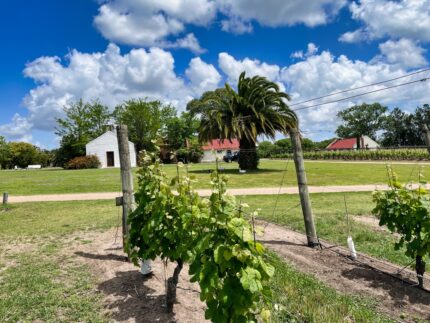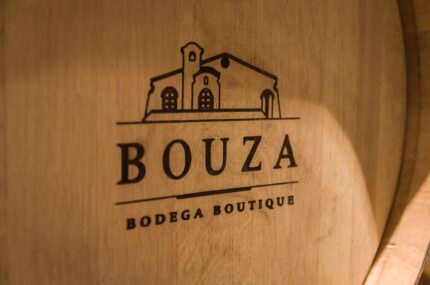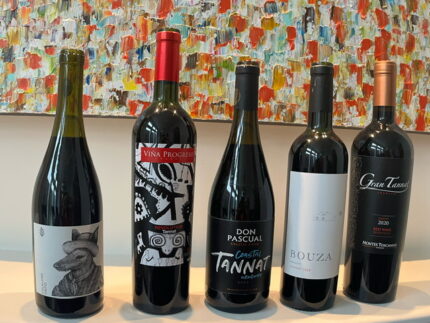The Uruguay wine industry began during the colonial era, but it began to thrive in the late 19th century when French, Spanish, and Italian immigrants introduced new grape varieties and winemaking techniques. Tannat, which is a robust red grape, flourished in Uruguay’s climate and fertile soils. Over the years, Uruguay’s winemakers have evolved to focus on quality over quantity. Today, Tannat is the country’s flagship grape, and Uruguay’s wines are gaining recognition worldwide for their unique character and quality craftsmanship as they expand the tapestry of this grape.
I had a chance to attend a Tannat Masterclass webinar hosted by Peter Granoff, MS. He has been an adjunct member of the faculty at the Culinary Institute of America’s Professional Wine Studies program and is internationally known as a speaker, wine educator, wine competition judge who also knows a lot about Uruguay.

I walked in with very little knowledge but walked out with the realization that Uruguay Wine is one of the best-kept secrets in South America. Let me tell you why.
The Location, Areas, and Grape
Uruguay is a cool climate region located near the Atlantic Ocean, which results in a tapestry of terroirs due to the weather oceanside. Since it’s in South America, I originally assumed the location would be near the desert. The area is 68,000 square miles which is about the same size as the state of Washington state with a population of 3.5 million. The soil ranges from granite, sedimentary rock, volcanic and calculous.
It is a little smaller than the Alexander Valley with almost 15,000 acres under vine. And a fun fact about the population — every citizen gets a free laptop, voting is mandatory for every person of age, and more wine is consumed per capita here outside of Europe.
Outlined by the Uruguay River, the Río de la Plata, and the Atlantic Ocean, Uruguay has 168 mostly family-owned wineries that produce 10 million cases to meet the current annual demand of around 20 liters per capita.
Pascual Harriague, who was born in Hasparren, France, is credited with being a pioneer viticulturist of Tannat. INAVI (Instituto Nacional de Vitivinicultura) the national organization for the promotion and regulation of Uruguayan wine declared April 14, the date Harriague was born, as Tannat Day. Until the 1990s, the variety was called Harriague. Tannat, which makes up 27 percent of the grapes planted, is located in six wine regions of Uruguay (Northern, Northern Riverside, Southern Riverside, Central, Metropolitan and Oceanic.)

These regions break into three subregions covering 404 miles of coastline and over 200 different types of soils.
- Canelones: Located near Montevideo, the country’s capital, the Canelones region is the largest wine-producing area in Uruguay. It is in a maritime climate moderated by the nearby Atlantic Ocean, which helps maintain mild temperatures year-round. Canelones is known for producing a wide range of wines, including Tannat, Cabernet Sauvignon, Merlot, and Sauvignon Blanc.
- Colonia: Located by the Rio de la Plata, the Colonia region is a similar climate to Canelones. The area’s sandy soils and coastal breezes are ideal for growing grapes, particularly Tannat and other red varieties. Colonia is recognized for its elegant and expressive wines, often characterized by their balanced acidity and fruit-forward profiles.
- Maldonado: Located in the southeastern part of Uruguay, the Maldonado region is characterized by its hilly terrain and proximity to the Atlantic coast. The region experiences cooler temperatures compared to Canelones and Colonia, making it a good place to grow grapes like Pinot Noir and Chardonnay. Maldonado is known for producing premium-quality wines with vibrant acidity and distinctive mineral characteristics.
One unique differentiator for the region is the way that georeferencing is used in the vineyards. Georeferencing is the process of assigning geographic coordinates (such as latitude and longitude) to a particular object, location, or dataset. This tool can be used for vineyard mapping, terroir analysis, soil mapping and to verify geographic origin and wine authenticity. Every wine is traceable with a QR code. Sustainability is important and the Uruguay vineyards are certified through the National Institute of Viniculture. While georeferencing is being used around the globe, this is the first region to establish a standard for all vineyards.

We tried five different Tannat wines and the diversity was such a surprise.
2020 Gran Tannat Premium “Montes Toscanini” – this winery is the most awarded one in Uruguay. I tasted raspberry, oak, chocolate, caramel, and vanilla. It was smooth and delicious. Could age well.
2020 Bouza Tannat — Very aromatic with black fruits, cassis, plum, smoke, and black pepper over an elegant smoky background. Velvety but marked tannins. Balanced and persistent final bouquet.
2023 Castel Pujol Folklore Tinto – Notes of strawberry, red current, forest floor, spice, and herbs. This is a blend of 80 percent Tannat and 20 percent Petit Manseng. It was referred to as a “nod to Spanish Clarette.
2020 Viña Progreso Revolution Tannat — I tasted a meatiness along with red fruit, saline, olive tapenade and balsamic vinegar.
2022 Establecimiento Juanicó Don Pascual Coastal Tannat — intense notes of plum, saline, berry, and floral notes.
Uruguay’s Tannat Tapestry illustrates the country’s knack for crafting a variety of wines with depth and character. Through careful cultivation and winemaking techniques, I could taste a range of Tannat wines that exhibit complexity and richness. From the lush plains to the steep hillsides, winemakers leverage the diverse terroir to create unique expressions of this grape often through blending. Their dedication to tradition and innovation results in wines that speak volumes about Uruguay’s winemaking skill and distinctive flavors, marking its presence in the global wine scene.
Learn more about Uruguay Wine.



